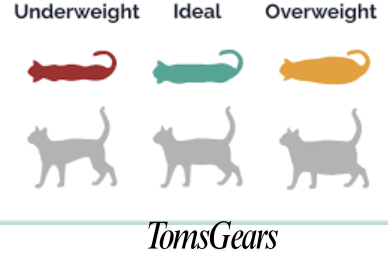How Long Does it Take for a Cat to Get Used to a Collar?
As a responsible cat owner, you know the importance of keeping your feline friend safe and properly identified. Collars are a simple yet effective solution for this, but getting your cat to actually wear one can be a daunting task. Many pet parents have wrestled with their furry companions, trying to fasten a collar around their neck, only to have it scratched off within minutes.
The good news is that with patience, positive reinforcement, and the right approach, most cats can learn to tolerate or even enjoy wearing a collar within a few days. The key is understanding the factors that affect their adjustment time and following a step-by-step process to make the transition as smooth as possible.
What Affects Adjustment Time
Every cat is unique, and their ability to adapt to a collar can vary based on several factors:
1. Age
Generally, kittens tend to adjust more quickly than adult cats. Kittens are more receptive to new experiences and can be more easily trained to accept collars from a young age.
2. Personality
Some cats are naturally more independent and resistant to change, while others are more adaptable. Shy or cautious cats may take longer to get used to a collar, while outgoing and curious felines may embrace it more readily.
3. Previous Experience
If your cat has worn a collar before, either as a kitten or in a previous home, the adjustment period may be shorter. Cats with negative associations from past experiences may take longer to warm up to the idea.
4. Collar Type and Fit
The type of collar you choose and how well it fits can significantly impact your cat’s comfort level. A poorly fitted collar can cause discomfort, making it more likely for your cat to resist wearing it.
Breakaway collars, designed to release when pulled, are generally safer and more comfortable for cats, making them more likely to accept them.
How Long Does it Take?
While there’s no one-size-fits-all answer, here are some general timelines for how long it may take a cat to get used to wearing a collar:
For Kittens
- Kittens introduced to collars between 5-7 weeks old can often adjust within 1-2 weeks with consistent positive reinforcement.
- Kittens under 16 weeks old typically adapt faster than adult cats.
For Adult Cats
- Cats over 1 year old with no prior collar experience may take 2-4 weeks to fully accept a collar.
- Older cats (7+ years) or those with negative past experiences could take 1-2 months.
Other Factors
- Cats with shy/anxious personalities may need an extra 1-2 weeks compared to bold/curious cats.
- A properly fitted breakaway collar is easier for most cats to get used to over 2-3 weeks versus a regular collar which could take 4+ weeks.
Signs a Cat Dislikes the Collar
Even if you follow all the right steps, some cats may still show signs of disliking their collar. Be on the lookout for the following behaviors:
- Excessive scratching or grooming at the collar area: This could indicate that the collar is irritating your cat’s skin or causing discomfort.
- Lethargy or loss of appetite: A sudden change in energy levels or eating habits may signify that your cat is stressed by the collar.
- Difficulty walking or running: If the collar is too tight or doesn’t fit properly, it could impede your cat’s movement.
- Hiding or avoiding behavior: Some cats may try to remove the collar by rubbing against furniture or hiding in hard-to-reach places.
If you notice any of these signs, it’s essential to address the issue promptly to prevent further stress or discomfort for your cat.
Step-by-Step Guide to Adjust a Cat to a Collar
Introducing a collar to your cat gradually and with positive reinforcement is key to a successful transition. Here’s a step-by-step guide to help you through the process:
1. Choose the Right Collar
Start by selecting a comfortable, well-fitting collar. Breakaway collars are the safest option, as they release if the collar gets caught on something, preventing strangulation. Consider a collar with your cat’s name and your contact information engraved or printed on it for identification purposes.
2. Let Your Cat Get Familiar with the Collar
Before putting the collar on your cat, let them sniff and investigate it. You can even place it near their food bowl or favorite napping spot to build positive associations.
3. Use Positive Reinforcement
When your cat remains calm around the collar, offer treats, praise, and petting. This will reinforce the idea that the collar is a good thing.
4. Start with Short Intervals
Once your cat seems comfortable with the collar’s presence, it’s time to put it on. Start with just a few minutes at a time, rewarding your cat with treats or playtime when they remain calm.
5. Gradually Increase Wear Time
Over the next few days or weeks, gradually increase the amount of time your cat wears the collar. Be patient and go at your cat’s pace, always rewarding calm behavior.
6. Address Resistance or Collar Removal
If your cat tries to remove the collar or shows signs of distress, remain calm and remove the collar immediately. Take a break and try again later, making sure to reinforce positive behavior.
7. Monitor for Signs of Adjustment
As your cat wears the collar for longer periods, watch for signs that they’re becoming more comfortable. These may include grooming near the collar area, playing while wearing it, or simply ignoring it altogether.
Cat Collar Safety Considerations
While collars are beneficial for identification and safety, they can also pose risks if not used properly:
- Entanglement hazards: Ensure your cat’s collar is the breakaway type to prevent strangulation if it gets caught on something.
- Skin irritation: Monitor the collar area for signs of rubbing or irritation, and remove the collar if necessary.
- Supervision: Always supervise your cat when introducing a new collar, and never leave them unattended while wearing a non-breakaway collar.
Frequently Asked Questions
Is it necessary to keep a collar on my indoor cat?
While not strictly necessary, a collar with identification can be helpful in case your indoor cat ever escapes or gets lost. It also provides a place to attach a small bell or tracker if desired.
Can collars be dangerous for cats?
Collars can pose a risk of strangulation or injury if they don’t fit properly or get caught on something. Always use a breakaway collar and monitor your cat closely when introducing a new collar.
What should I do if my cat absolutely refuses to wear a collar?
If your cat shows persistent distress or inability to adjust to a collar, consider alternative identification methods like microchipping or a pet ID tag attached to their harness or carrier.
How often should I replace my cat’s collar?
Check your cat’s collar regularly for signs of wear and tear, and replace it when it becomes stretched, frayed, or doesn’t fit properly anymore.
Sum Up
Getting your cat accustomed to wearing a collar can be a test of patience, but the benefits of identification and safety make it well worth the effort. By understanding the factors that influence adjustment time, following a gradual introduction process, and maintaining positive reinforcement, most cats can learn to tolerate or even enjoy their new accessory.
Remember, every cat is unique, so be prepared to adapt your approach based on your feline friend’s individual needs and personality. With time, consistency, and a little bit of creativity, you can help your cat feel comfortable and secure while wearing their collar.






